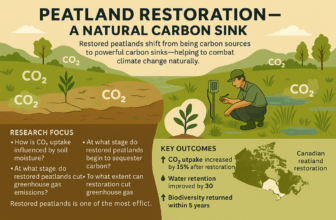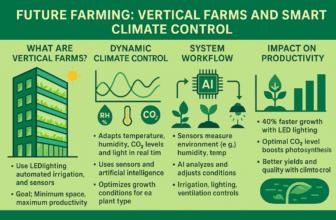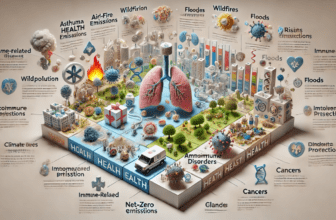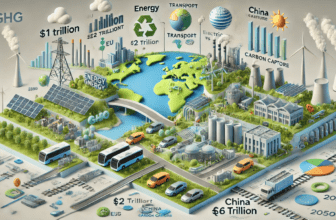Why Water Matters: GCEW 2024 Report on Global Water Economics

The Global Commission on the Economics of Water (GCEW) has published a groundbreaking report titled “The Economics of Water: Valuing the Hydrological Cycle as a Global Common Good”.
This report offers a fundamentally new perspective on how societies should govern and value both blue water (rivers, lakes, aquifers) and green water (soil moisture and vegetation). It emphasizes that water is not just a local resource but a global common good deeply interwoven with climate systems, ecosystems, and international development goals.
Over 2.9 billion people currently experience severe water stress, and more than 1,000 children under age five die each day due to unsafe drinking water and poor sanitation. According to the World Health Organization, the lack of safe water continues to be one of the leading causes of preventable deaths in developing regions. The report calls for urgent, coordinated action across sectors and borders to reverse this humanitarian and environmental crisis.
1. Key Objectives and Missions
The GCEW outlines several transformative objectives designed to redefine how water is valued and managed globally. These include international cooperation, economic restructuring, and integrated ecological management.
- Treat Water as a Global Common Good: Recognize water as a transboundary resource that supports all UN Sustainable Development Goals (SDGs) and must be governed collectively for long-term sustainability. A Global Water Pact is proposed to anchor measurable commitments at the international level.
- Revalue Water: Reform harmful subsidies (USD 700 billion annually) and implement true-cost pricing that accounts for environmental degradation, scarcity, and social value. These subsidies primarily stem from agricultural and energy policies that distort water use.
- Protect Green Water Ecosystems: Understand that 40–60% of rainfall over land comes from green water via evapotranspiration, which is threatened by deforestation, land-use change, and soil carbon loss. Healthy soils rich in organic matter are crucial for terrestrial moisture recycling and climate regulation.
- Adopt Mission-Oriented Action: Align stakeholders through five coordinated missions aimed at delivering systemic impact on water security and ecosystem resilience.
Five Missions
- Water-Smart Food Systems: Transition toward efficient irrigation, regenerative agriculture, and reduced reliance on water-intensive animal products. This includes widespread adoption of drought-resistant crops and soil conservation practices, with emphasis on reducing embedded water use in food systems.
- Restore Green Water Habitats: Protect and restore forests, wetlands, and inland waters to safeguard atmospheric moisture flows and rainfall cycles. This also supports biodiversity and natural carbon sinks.
- Establish a Circular Water Economy: Reduce losses by cutting urban water leakage by half and recycling at least 50% of wastewater, enabling a regenerative loop. See World Bank on Water.
- Enable Clean, Low-Water Energy and AI: Innovate low-water technologies for data centers, semiconductors, and mineral extraction essential to the digital and green economy. This includes improving cooling systems and sourcing water-efficient raw materials in energy transitions.
- Ensure Safe Water for All by 2030: Provide affordable decentralized water and sanitation solutions in rural and underserved urban areas, leveraging off-grid technologies and local community engagement.
2. Impacts of Inaction
The cost of inaction is profound. The report warns of worsening climate disruptions, economic slowdowns, and social instability. Key projections include:
- 8–15% GDP loss in affected regions by 2050 due to water scarcity and ecosystem collapse.
- There will be up to a 23% reduction in cereal production globally if groundwater overuse continues unchecked, leading to rising food prices and hunger.
- Mass displacement and resource conflict as water stress fuels migration and social tension across regions with shared water systems.
- Risk of climate tipping points: The collapse of hydrological stability due to green water loss could trigger irreversible changes in climate systems and biosphere feedback loops.
3. Solutions and Financial Needs
GCEW outlines a path forward involving major shifts in investment, policy, and international collaboration. Key priorities include:
- USD 500 billion/year is needed to achieve SDG 6: Clean Water and Sanitation globally, especially in low-income countries.
- USD 150–200 billion over 15–20 years to transform agriculture into a sustainable, low-water sector using precision irrigation and nature-based solutions.
- USD 200–300 billion to build circular water infrastructure in rapidly growing cities and industrial areas.
Redirecting just 50% of current environmentally harmful subsidies could reduce global water use by 15–20%, improve food security, and accelerate climate resilience. The report also calls for creating a global green water data infrastructure to address existing knowledge gaps.
4. Governance and Innovation
To ensure long-term success, the report proposes enhanced governance mechanisms, including a global water governance framework. A Global Water Pact would formalize shared responsibilities and collective goals. It also recommends establishing Just Water Partnerships that unite public institutions, private investors, and civil society under common sustainability goals. These partnerships should utilize blended finance instruments, including first-loss guarantees and co-investment models, to attract private capital into high-impact water projects.
Furthermore, new or renewed water permits should be based on justice-based conditionalities, ensuring that water allocations support equity, sustainability, and long-term environmental security.
Conclusion
The GCEW emphasizes that the water crisis is a systemic risk, but also a generational opportunity. Revaluing water, phasing out harmful incentives, and scaling innovative water solutions will not only stabilize the hydrological cycle but also strengthen climate action, biodiversity, and economic prosperity for decades to come.
What is green water, and why is it important?
Green water refers to the moisture stored in soil and vegetation that evaporates or transpires back into the atmosphere. It is essential for maintaining rainfall patterns, supporting agriculture, and regulating the local and global climate. Approximately 40–60% of land-based rainfall is recycled through green water systems.
What is the Global Water Pact proposed by GCEW?
The Global Water Pact is a proposed international agreement to formally recognize the hydrological cycle as a global common good. It aims to establish measurable goals, coordinate cross-border cooperation, and integrate water governance into global climate and biodiversity frameworks.
How are current subsidies harming water systems?
An estimated USD 700 billion is spent annually on subsidies, mainly in agriculture and fossil fuels, that often promote inefficient water use and environmental harm. Redirecting even half of this amount could substantially reduce global water consumption and support sustainable solutions.
What are Just Water Partnerships?
Just Water Partnerships are collaborative agreements between governments, private investors, and communities. They use tools such as blended finance, first-loss guarantees, and outcome-based contracts to support equitable, inclusive, and high-impact water infrastructure projects.
How does the circular water economy work?
A circular water economy aims to reduce waste and maximize reuse. It includes recycling treated wastewater, minimizing leakage in distribution systems, and implementing nature-based solutions to restore water flows and improve ecosystem health.
What role does soil carbon play in water resilience?
Soils rich in organic matter are better at retaining moisture, enhancing green water availability, and supporting plant productivity. Increasing soil carbon helps improve drought resilience and contributes to both carbon sequestration and rainfall stability.
Why is urgent action needed?
Delaying meaningful action could trigger irreversible climate tipping points, accelerate biodiversity loss, and cause economic disruption. Water scarcity may also intensify migration and conflict. The report calls for bold, coordinated global action to prevent these outcomes and secure long-term resilience.
[00:00:01]
We’re facing a massive challenge with the global water crisis. Water is a driver of change, fundamentally impacting extreme events—droughts, floods, and heatwaves—all of which are related to water scarcity. Many of the abrupt, extreme events we see around the world today are water-related.
This project brings together some truly game-changing thinkers.
As an economist, I’m particularly interested in how the design of our policies has contributed to the problem, especially in terms of how we theorize and understand the economy. The economy is shaped by how we govern public, private, and civil society organizations—and crucially, how these sectors interact with one another.
[00:00:39]
Water is both a problem and an opportunity. It cuts across all the Sustainable Development Goals (SDGs). It’s not just about SDG 6—clean water and sanitation—or SDG 14—life below water. Water plays a critical role in issues like gender parity, new forms of collaboration, hunger, and climate change.
In fact, water runs through all 17 SDGs. And to achieve those goals, we need investment, we need financing, and we need to rethink foundational questions like ownership and intellectual property rights.
[00:01:11]
There is no lack of finance in the world—there is plenty of it. What we lack are governance models that incentivize investment and regulate private sector participation in a way that delivers both a decent return and serves the public good.
This requires a new kind of partnership between the public and private sectors—one that goes far beyond traditional models. It means sharing risk, co-investing, and not just assigning the public sector as regulator and the private sector as investor.
We need to invest in R&D, in scaling up technologies, and in global public goods.
[00:02:15]
And here’s the key: when countries contribute internationally to building capacity elsewhere—in water security, climate resilience, or public health—it’s not about aid. This isn’t about increasing aid budgets. It’s about strategic investment that benefits all of our countries in the long run.
[00:02:53]
We’ve studied water for years and been concerned about it, but the urgency hasn’t been where it needs to be.
In my language, Igbo, from Nigeria, the word for water is mili. That word mili evokes life. In my culture, water is life. I believe it’s the same in many cultures.
So when I say the word water, it immediately brings to mind the image of life and living. That’s why the issue of water is so precious.









